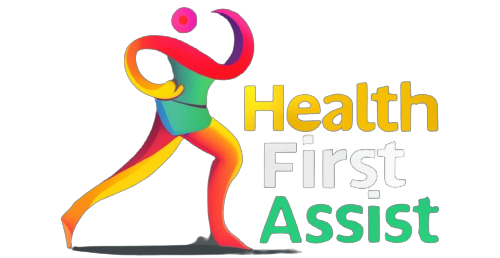Sleep Disorder Narcolepsy: The Struggle to Stay Awake and Alert
Sleep disorder narcolepsy is a chronic neurological condition characterized by overwhelming daytime sleepiness, sleep attacks, and disturbed night-time sleep. Despite its prevalence, affecting an estimated 1 in 2,000 people, narcolepsy remains widely misunderstood and often goes undiagnosed or misdiagnosed for years. If you find yourself struggling to stay awake and alert throughout the day, experience sudden sleep episodes, or feel unrested despite getting adequate night-time sleep, you may be one of the many individuals grappling with this debilitating sleep disorder.
What is Sleep Disorder Narcolepsy?
Narcolepsy is a lifelong sleep disorder that disrupts the brain’s ability to regulate sleep-wake cycles. Its primary symptoms include excessive daytime sleepiness (EDS) and sleep attacks, which are sudden and overwhelming urges to fall asleep, often occurring at inappropriate times or during activities that demand wakefulness.
People with narcolepsy live in a constant state of sleepiness as if they haven’t slept for days or weeks, even after a full night’s rest. It’s an incredibly disruptive condition that significantly impacts daily functioning and quality of life.
– Dr. Alon Avidan, Director of the UCLA Sleep Disorders Center.
In addition to EDS and sleep attacks, narcolepsy is often accompanied by other symptoms like:
- Cataplexy (sudden muscle weakness or paralysis triggered by strong emotions)
- Sleep paralysis (inability to move or speak upon waking or falling asleep)
- Hypnagogic hallucinations (vivid, dream-like hallucinations while falling asleep)
- Disrupted night-time sleep and insomnia
While narcolepsy can develop at any age, it most commonly emerges in adolescence or young adulthood, between the ages of 10 and 25.
Causes and Types of Sleep Disorder Narcolepsy
Despite extensive research, the exact causes of narcolepsy are not fully understood. However, experts believe it arises from a complex interplay of genetic and environmental factors that ultimately disrupt the brain’s sleep-wake regulation processes.
At the core of narcolepsy is a deficiency of the neurotransmitter hypocretin, which plays a key role in regulating wakefulness and REM sleep. But what triggers this deficiency is still being explored.
– Dr. Alon Avidan
There are two main types of narcolepsy, classified based on the underlying cause:
- Type 1 Narcolepsy (NT1)
This is the most common form, caused by a lack of hypocretin due to the autoimmune destruction of hypocretin-producing cells in the brain. It’s often associated with cataplexy.
- Type 2 Narcolepsy (NT2)
In this type, hypocretin levels are normal, and the cause is unknown. NT2 generally lacks cataplexy but shares other symptoms like EDS and sleep attacks.
Both types share common symptoms but may differ in severity, onset, and treatment approaches.
Risk Factors and Potential Triggers
While anyone can develop narcolepsy, certain factors may increase one’s risk or act as potential triggers, including:
- Genetics: Having a close relative with narcolepsy increases the risk by 10-40 times.
- Autoimmune Disorders: Conditions like type 1 diabetes or multiple sclerosis may trigger an autoimmune response linked to NT1.
- Head Trauma or Brain Injuries: Severe head injuries or other neurological insults may play a role in some cases.
- Hormonal Changes: Major hormonal shifts during puberty or pregnancy may unmask or exacerbate symptoms.
- Infections or Illness: Certain viral infections, like H1N1 influenza, have been associated with narcolepsy onset in some patients.
While we can’t always pinpoint a definitive cause, understanding potential risk factors and triggers can aid in earlier diagnosis and intervention. – Dr. Alon Avidan.
The Profound Impact on Daily Life
Beyond the physical symptoms, sleep disorder narcolepsy takes an immense toll on daily functioning, personal relationships, mental health, and overall quality of life.
Narcolepsy robs you of your ability to be present, focused, and productive throughout the day. It’s like being in a constant, foggy state of exhaustion that impacts every aspect of your life.
– Sarah P., who was diagnosed with NT1 at age 19.
Indeed, individuals with narcolepsy face a range of challenges, including:
- Difficulties at school or work due to sleepiness and concentration issues
- Impaired cognitive functioning and memory problems
- Increased risk of accidents or injuries due to sleep attacks
- Social isolation and strained personal relationships
- Higher rates of depression, anxiety, and low self-esteem
- Disrupted sleep patterns leading to chronic fatigue
- Potential weight gain from metabolic changes
“The unpredictability of narcolepsy symptoms makes it incredibly difficult to plan or follow through on daily tasks and responsibilities,” adds Sarah. “It’s a constant battle against your own body and brain.”
Diagnosis and Treatment Approaches
Diagnosing sleep disorder narcolepsy can be a complex process, as symptoms often overlap with other sleep disorders or conditions like depression or chronic fatigue syndrome.
“Typically, we start with a comprehensive sleep history, physical exam, and screening tools to assess symptom frequency and severity,” explains Dr. Avidan. “From there, specialized sleep studies like polysomnograms and multiple sleep latency tests can help confirm a narcolepsy diagnosis.”
Once diagnosed, a multifaceted treatment approach is necessary to manage narcolepsy’s wide-ranging symptoms effectively. Common treatment strategies include:
- Medications
Stimulants like modafinil or armodafinil can promote wakefulness during the day, while sodium oxybate may help consolidate night-time sleep.
- Scheduled Napping
Taking planned, short naps throughout the day can help combat excessive sleepiness and improve alertness.
- Lifestyle Adjustments
Developing good sleep habits, exercising regularly, eating a balanced diet, and managing stress are crucial lifestyle components.
CBT can help change thought patterns and behaviors that perpetuate the negative impacts of narcolepsy.
- Workplace or Academic Accommodations
Making environmental modifications like scheduled break times or altered work/school schedules can promote better symptom management.
Narcolepsy is a highly individualized disorder, so finding the right combination of therapies is key. It’s also important to surround yourself with a strong support system that understands the unique challenges you face.
– Dr. Alon Avidan.
Living Well with Sleep Disorder Narcolepsy
While managing sleep disorder narcolepsy requires ongoing effort and commitment, it is possible to live a full, rewarding life with the right tools and mindset.
“The diagnosis was initially devastating, but I’ve learned to adapt and implement strategies that allow me to function at my best,” shares Sarah. “It’s all about being proactive, setting realistic expectations, and not letting narcolepsy define you.”
Beyond medical treatments, lifestyle adjustments like:
- Maintaining a consistent sleep schedule
- Avoiding caffeine, alcohol, and sedating medications
- Pursuing enjoyable hobbies and stress-relief activities
- Joining a narcolepsy support group for camaraderie
- Educating loved ones about the disorder’s realities
Narcolepsy is a marathon, not a sprint. Be patient, celebrate small victories, and don’t lose hope – with perseverance and the right care team, you can absolutely find ways to thrive.
– Dr. Alon Avidan.
Conclusion
Navigating life with a chronic sleep disorder like narcolepsy is undoubtedly challenging. But by better understanding its causes, symptoms, and evidence-based treatment approaches, you can take steps to regain control over your wakefulness, daily functioning, and overall sense of vitality. With self-compassion, a positive mindset, and a strong support network, the relentless fight against excessive sleepiness becomes more manageable. As the famous diarist Anne Frank once wrote, “The best remedy for those who are afraid, lonely or unhappy is to go outside, somewhere where they can be quite alone with the heavens, nature and God.” On those days when narcolepsy weighs heavily, seek solace in the simple act of being awake and present in the vast, vibrant world around you.
Related Topics
- Low Blood Potassium (Hypokalaemia): Causes, Symptoms, And Treatment
- Luteolin: The Super Flavonoid Revolutionizing Health And Fitness
- Managing Anxiety: A Guide To Keep Calm In Anxious Times
- Margot Robbie: The Secret To Staying Fit
- Megan Thee Stallion: How The Hot Girl Coach Gets Her Shape
Cardio FLEX Reviews: Unveiling the Truth about Cardiovascular Health Support
Cortexi Reviews – Unveiling the Power of the Ultimate Nootropic Formula
Gluconite Review – A Comprehensive Analysis of Safety and Effectiveness
Ikaria Lean Belly Juice Reviews – The Ultimate Weight Loss Solution
Java Burn Reviews: A Revolutionary Approach to Boosting Metabolism
Liv Pure Reviews: to Achieve Your Weight Loss Goals
ProDentim Reviews: Solution for Dental and Gum Problems
Puravive Reviews: A Detailed Analysis of Discovering the Essence
Quietum Plus Reviews: Unlocking the Secrets to Optimal Ear Health and Clear Hearing
Sugar Defender Reviews: The Importance of Blood Sugar Management
Sumatra Slim Belly Tonic Reviews: Discover its Power for Healthy Weight Loss

